| Botanical Name |
|
| Family |
Lamiaceae - The mint and salvia family |
| Pronunciation |
SAL-vee-uh af-ri-KAHN-uh loo-TEE-uh |
| Common Name(s) |
English: Beach Salvia; Dune salvia; Brown Salvia
Afrikaans: Sandsalie; Strandsalie; Geelblomsalie
|
| Plant Group |
- Shrub A woody plant of relatively low height, having several stems arising from the base and lacking a single trunk; a bush.
|
| Plant Size |
- Medium
| Tree | 10m to 16m |
| Shrub | 1m to 2m |
| Perennial/ground cover | 40cm to 60cm |
| Bulb | 40cm to 60cm |
| Succulent | 40cm to 60cm |
|
| Position |
- Sun The area is in full sun for all or most of the day, all year round.
|
| General Information |
- Drought Tolerance: High The plant is well adapted to arid conditions; it can survive long periods of drought and high temperatures without extra water.
- Evergreen Plants that have leaves all year round.
- Fragrant / Aromatic These plants posses a strong, usually pleasant odour.
- Frost: Half-hardy The plant is able to survive low temperatures and some frost but requires protection against severe frost.
- Prune hard after flowering Fast growing shrubs that grow lanky within a season. Cut off branches and stems of these plants to a third of their original length. This will increase the yield of flowers, improve the plants shape and enhance the structural strength of main branches.
- Salt spray tolerant A plant with specific adaptations enabling it to grow in a saline environment.
- Sand tolerant Plants adapted to survive in nutrient poor, very sandy soils.
- Water Wise Plant species originating from low rainfall regions that require less water to survive and thrive than other plant species.
- Wind Tolerant Plants able to withstand the effect of strong winds.
|
| Specific Information |
Salvia africana-lutea, with its aromatic greyish-green foliage and coppery to bronze flowers, makes a useful contrast to the green vegetation and bright flowers of the garden. After pollination the flowers fall, leaving a saucer-like pinkish calyx which remains on the plant, in time turning brown and papery. The nectar rich flowers of Salvia africana-lutea is attractive to sun-birds and butterflies and it is the host plant for a variety of bronze and blue butterfly species. The leaves are useful in potpourri, keeping their shape, colour and much of their fragrance.
|
| Ad Break |
|
| Flowers |
| Description |
tubular flower with a persistent bract
|
| Season |
- Spring Plants will seldom bloom for the entire season as given in the list, but should flower during a period within these parameters.
|
| Colour |
|
| Growth Rate |
- Fast Specifying growth rate can be very misleading as there is considerable variation of growth rate depending on type and species of plant, available water, supplementary feeding, mulching and general care, as well as the plants suitability and adaptability to the garden environment.
|
| Plant Uses |
- Accent or Focal Point A plant used to attract the attention because of its colour or form.
- Attracts bees, butterflies or other insects This plant attracts insects which can be food for birds or other creatures in your garden.
- Attracts Birds This plant will attract birds.
- Border A strip of ground, at the edge of a driveway or path in which ornamental plants or shrubs are planted.
- Boundary A plant useful for planting around the edges of the property to form a green or colourful backdrop, an impenetrable hedge, to hide walls or create privacy.
- Filler Either a fast growing tree or shrub used temporarily to fill in an area while the permanent plants grow to a desired size, or a plant used to fill gaps in borders or beds.
- Pioneer for new gardens A very fast growing plant, able to withstand hardship, that can be used to populate land that has recently been cleared of natural vegetation. These plants pave the way for slower-growing species by adding nutrients to the soil and creating leaf litter.
- Rock Garden An area constructed of larger rocks, arranged naturally, to emphasise the use of stones as a main element. Generally plants used do not need a lot of care.
- Suitable for coastal gardens Plants adapted to dry, sandy soil, forceful wind, limited rainfall and intense sunlight.
- Suitable for seaside gardens Plants that will survive the hostile environment of harsh salty winds, dry sandy soil, irregular rainfall and heat found in seaside gardens.
- Wild Garden An indigenous garden planted for the benefit of wildlife and birds. Provides food, water, a variety of mini-biomes and no poisonous chemicals are used.
|
| Distribution and Habitat |
from the coast of Namaqualand to the Cape Peninsula in the Western Cape, eastwards to Port Alfred in the Eastern Cape, close to the sea and often found in vegetation on coastal sand dunes
|
| Planting Suggestions |
For vigorous growth plant in light, well-drained soil, give it plenty of compost, mulch well and water regularly until established. This shrub stands up well to pruning to keep the plant shapely. After about five years the wood becomes brittle and the plant loses its vigour. I have cut older plants almost to the ground and they have regenerated well, extending the life of the plant for a couple of years, but after that it is best to start afresh with a young plant.
|
| Medicinal Uses |
Beach salvia is used to make a tea for coughs, colds, bronchitis and female ailments. Place a 7 cm sprig of leaves in a cup of boiling water for 5 minutes then strain and drink sweetened with honey.
|
| Ad Break |
|


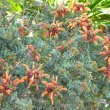
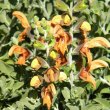
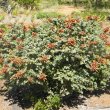
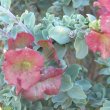
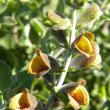

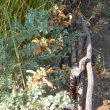


Discuss this plant
Share knowledge, ask a question or give an experience.